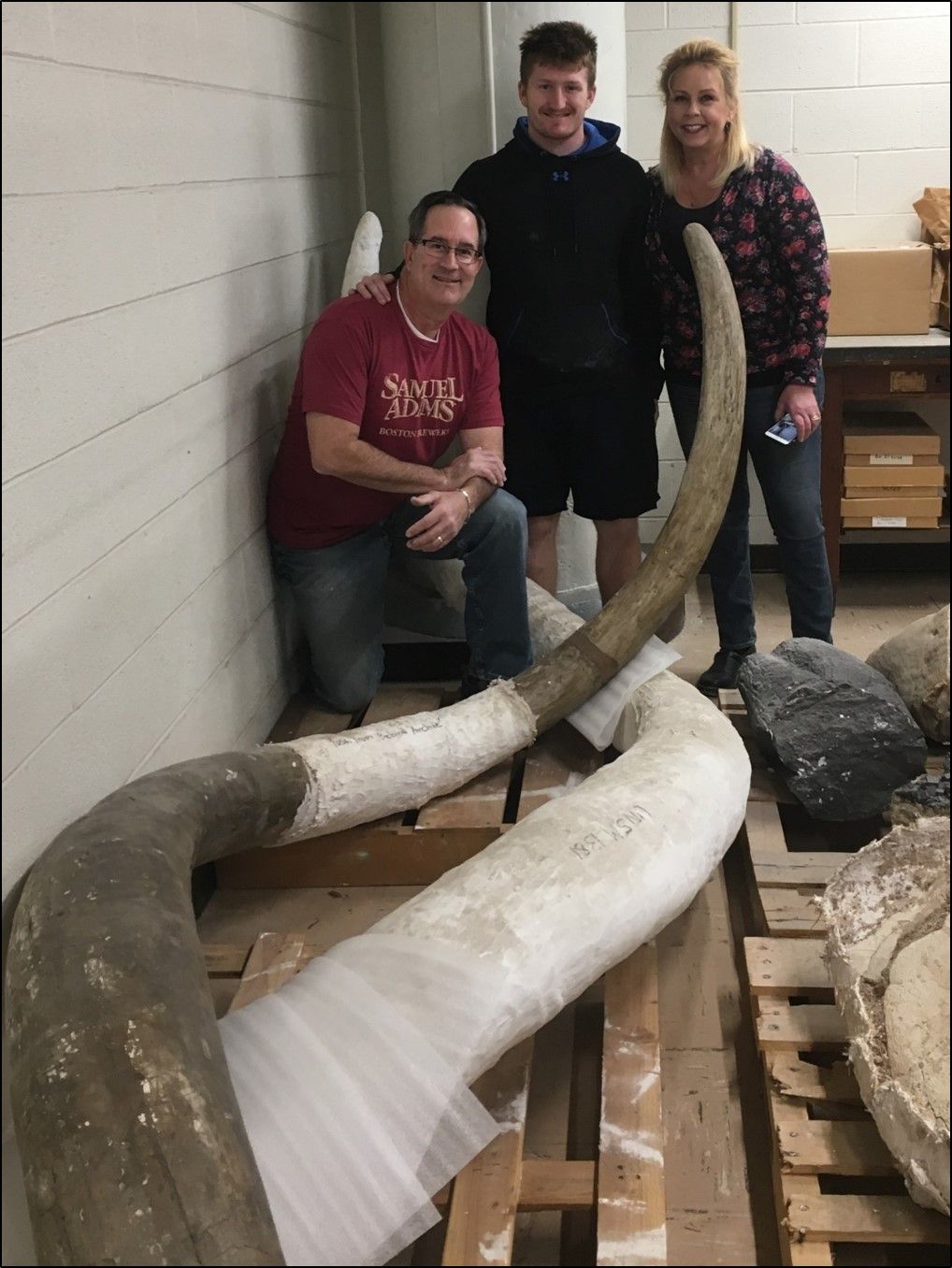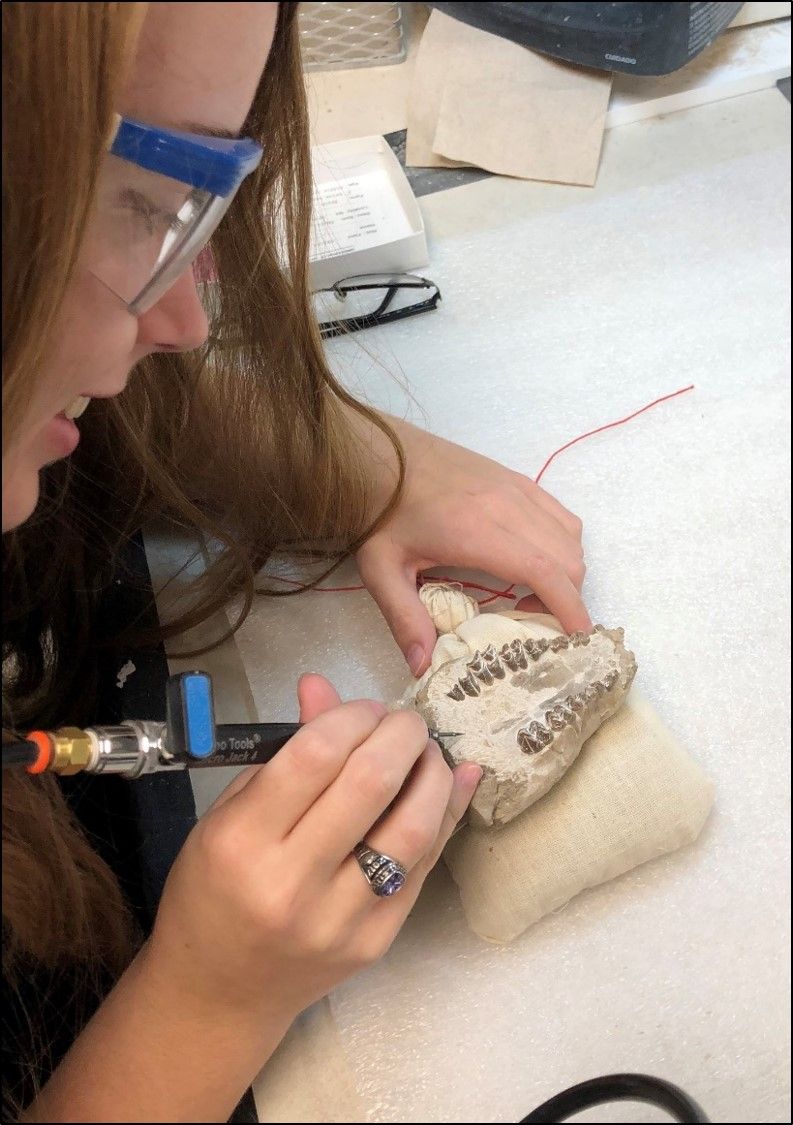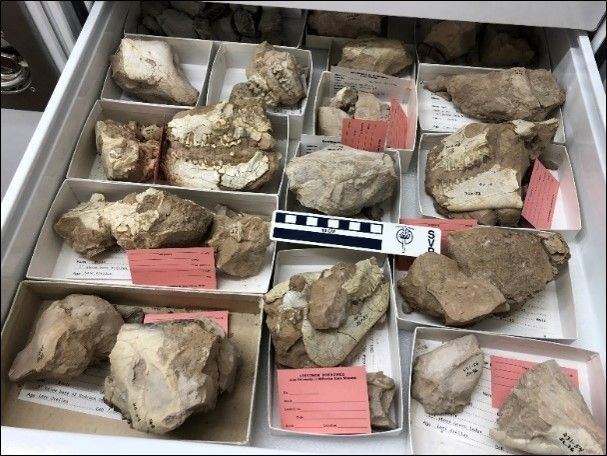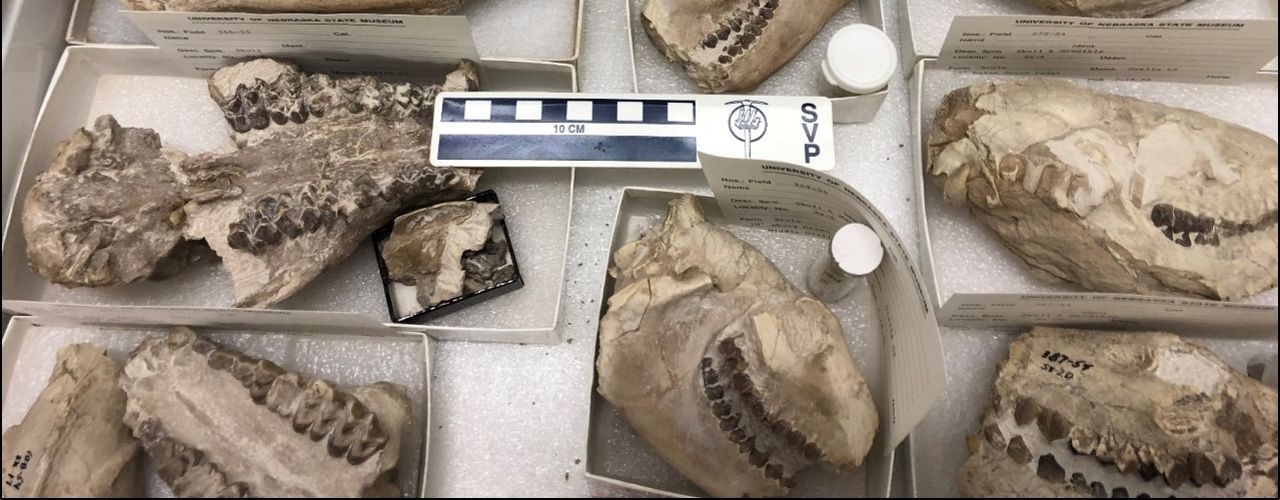
Behind The Scenes
Project Oreodont
Project Oreodont: Preparing a Historic Backlog
"Project Oreodont" is a multi-year project launched in 2016 to accommodate the growing volunteer base in the Vertebrate Paleontology Preparation Lab.
Oreodonts were a very common group of sheep-sized hoofed mammals that roamed across North America for millions of years. The University of Nebraska State Museum has an abundance of oreodont specimens from northwestern Nebraska, thanks in part to intense collection efforts from the 1930s-1950s.
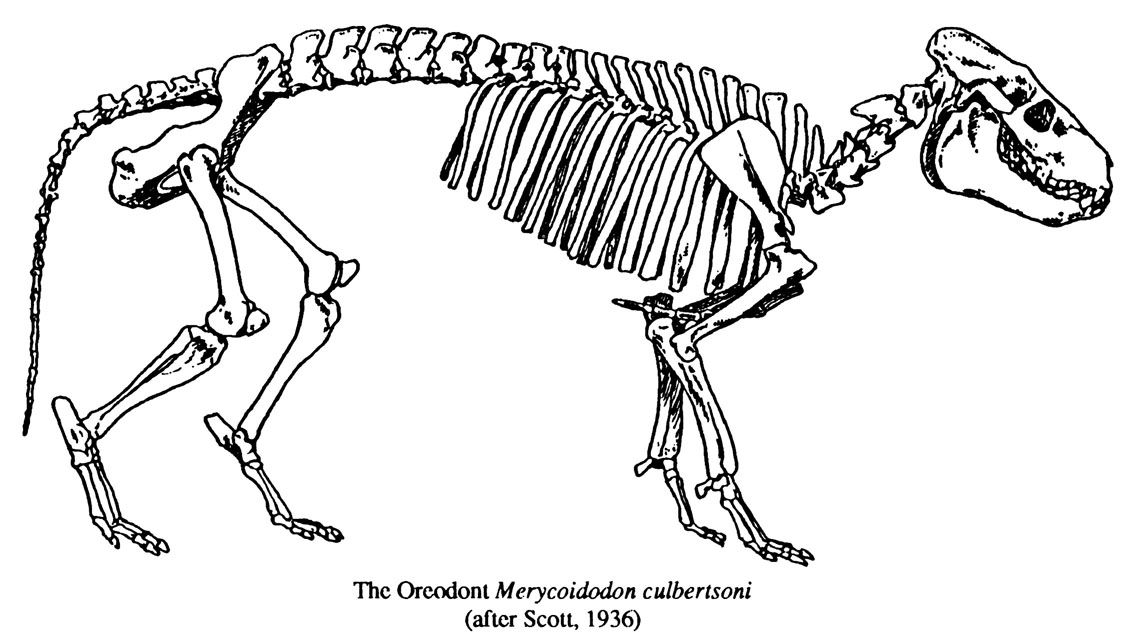
Many of the specimens are under prepared, if prepared at all. With about 375 specimens partially prepared in the White River collections room, an additional 647 unopened plaster jackets housed in the basement of Nebraska Hall and another 200+ specimens donated to the Museum by the late Morris Skinner (a prolific field collector for the American Museum of Natural History), this project has well over 1,200 oreodonts for the volunteers and staff to work on for many years to come!
Volunteers begin by studying images of oreodont skull anatomy and observing specimens that have been previously prepared. The project's primary goal is to expose the dentition and other diagnostic features typically used by researchers during analysis. As volunteer experience grows, they progress from hand tools to airscribes; removing mudstones and siltstones surrounding the majority of the unprepared oreodonts. Once finished, specimens are reviewed then re-housed in archival boxes with simple support. Volunteers are educated in anatomical features and taphonomic clues, such as bite marks, bone compression, age determination, and muscle attachment areas. Together these clues provide interesting stories to go along with each specimen.
Project Oreodont is a multi-phase effort. Phase One involves finishing the partially prepared oreodont specimens in the collection rooms, as well as the Skinner oreodonts. Phase Two will tackle the plaster jacketed specimens in storage. Phase Three involves reorganization and identification of all of the oreodont specimens. This phase will be aided by the Museum's Vertebrate Paleontology Curator and Collections Manager.
Many volunteers are actively involved with this project including: Diana Dohmen, Rodney Glotzbach, Denise Olton, Perry and Sharon Gydesen, Sam Wright, Carole Goebes, and Darrell Pavey.
If you would like more information on volunteering in the Vertebrate Paleontology Prep lab contact our Volunteer Coordinator, Molly Bloom at molly.bloom@unl.edu.
Authors: Carrie Herbel (Chief Preparator, Vertebrate Paleontology), Rob Skolnick (Preparator, Vertebrate Paleontology), and Jeremy McMullin (Highway Salvage Preparator, Vertebrate Paleontology).






